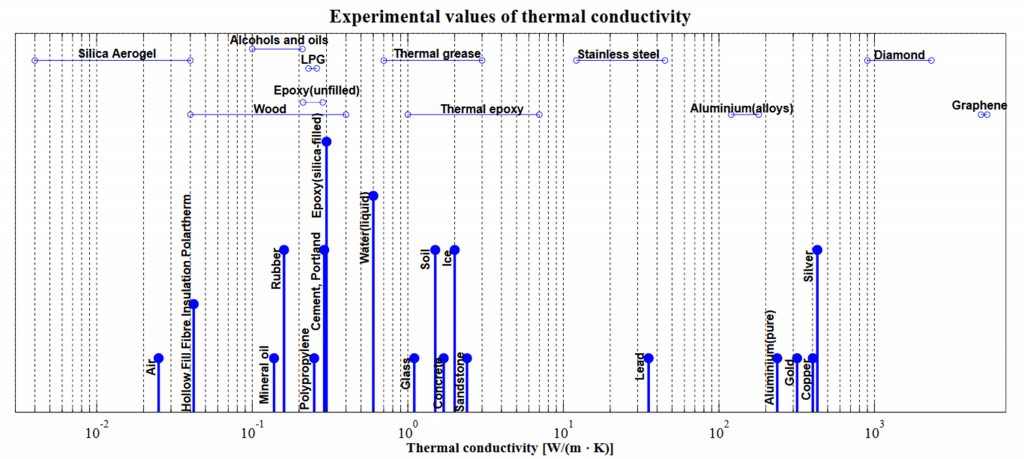The first Small Business Innovation Research (SBIR) announcement for 2017 by the US Department of Defense (DoD) is out and there is one topic of great interest to thermal management professionals: topic # N171-081 “High Performance Thermal Interface Material for Energy Storage Devices and Other Electronic Components” by the US Navy, which is seeking thermal interface materials (TIMs) that show multiple orders of magnitude improvement in thermal conductivity and other performance metrics.
Readers of Electronics Cooling will be very pleased to note that 2 out of 3 references cited in this SBIR are from our site! One of them is a good summary on the basics of TIMs and the material choices available, discussing the application of Thermal Greases, Elastomeric Pads, Thermal Tapes, Phase Change Materials, Thermal Gels, Thermally Conductive Adhesives and Solders in electronics hardware. The second reference is a more in-depth article on the problems with measurement of the properties of TIMs and the applicable standards. In addition to the foregoing two references, Electronics Cooling features many more articles on this topic including this one –Top 20 Considerations For Selecting Thermal Interface Materials, a good read!
Navy’s Shipboard energy storage systems under development are expected to be operated at high charge-/discharge-rates and at high duty cycles leading to significant thermal management challenges. Maintaining battery temperature variations in a narrow window is critical to the shipboard power system performance and battery life. It is well known that elevated temperatures cause reduced cycle life and may present a safety risk in batteries. Thermal gradients in a battery may also cause an unbalanced state of its operation. Battery cells that the Navy uses are commonly placed in a heat sink structure where the thermal interface between the battery cell and the heat sink must be minimized to ensure an efficient thermal management solution.
The SBIR topic seeks new thermal interface materials (TIMs) which are electrically insulating and thermally conducting. The TIM must withstand vibration and abrasion. And, to allow easy servicing of battery modules, the thermal interface material must not form a permanent bond, i.e., reworkability is one of the primary requirements. The TIM must also accommodate the irregular gap width and/or irregular clamping forces. The material must be non-flammable, non-toxic, and must not require any personal safety equipment for handling (gloves, mask, respirator, etc).
Current Landscape of TIMs
The key properties of interface materials are thermal impedance (or its reciprocal thermal conductance) and thermal conductivity. The thermal impedance is measured according to ASTM D5470, a good discussion of which can be found in this Electronics Cooling article. It is worthwhile to look at a comparative chart of thermal conductivities of different materials, shown in the figure below.

The state-of-the-art thermal conductivities of most TIMs are in single digits as seen in the figure above. To achieve several orders of magnitude improvements in TIMs, materials of higher thermal conductivity such as Diamond and Graphene will need to be infused into a TIM.
What the Navy is Looking For
US Navy’ announcement for first of the three-phase effort to develop a thermal interface material is intended for use in its militarized battery modules. The TIM to be developed by small businesses has to meet improvements in all characteristics of TIMs:
- robust performance to meet vibration and abrasion requirements
- non-permanent bonding (reworkability)
- high dielectric strength
- high thermal conductance
The SBIR solicitation seeks a thermal interface material which provides unmatched thermal performance when considering the aforementioned challenges. It is interesting that SBIR says the use of advanced materials (e.g. nano-materials, phase change materials, composites, etc.) is encouraged but not required! The relevant metrics to be used in material selection are as follows:
- Heat transfer surface area (for a single battery cell) – 8 sq. in to 60 sq. in
- Number of cells per module – 12 to 48
- Heat flux at cell surface – 3 kW/m^2 to 7 kW/m^2
- Heat sink material and roughness – Aluminum, machined
- Nominal temperature – 40 to 70 deg C
- Maximum temperature – 150 deg C
- Gap and contact pressure across a single cell – May range from a 50 mil gap to 100 psi contact pressure (although larger gap sizes would be permitted if desired)
- Thermal conductance – Threshold: 2000 W/(m^2-K), Objective: 5000 W/(m^2-K)
- Electrical insulation rating – Threshold: 2000V, Objective: 5000V
- Flammability – Compliance with recognized standards for plastic materials such as ASTM D 1000, UL 94. Similar standards should be used for other material types.
- Mechanical shock resistance – Refer to MIL-S-901D
- Vibration resistance – Refer to MIL-STD-167-1A
- Transportability and other environmental compatibility – Refer to MIL-STD-810G
What is very interesting above is the thermal conductance requirement –in the range for threshold and objective values mentioned above and for a gap of 0.050in, the equivalent thermal conductivities for an area of 8in^2 range from 500W/m-K to 1200W/m-K. No doubt fillers for TIMs in these ranges of thermal conductivities will need to be Carbon-based. To make an electrically insulating TIM with very high thermal conductivity will definitely require some ingenuity!
In Phase I, the small business is expected to identify one or more thermal interface materials for intended development in Phases II and III. The small business is required to explore how to meet the stated objectives through analysis and may choose to prove feasibility through testing. The focus of Phase I is on thermal conductance, electrical insulation, resistance to vibration/abrasion, conformance to irregular gaps, manufacturing cost, and marketability/transition to other military customers or to industry.
In Phase II, the small business is required to further develop the chosen thermal interface material identified in Phase I. In this phase, prototype materials will need to be produced and may require iteration on the material composition or manufacturing technique. The prototype materials will be tested in accordance with Navy instruction to ensure that test conditions are appropriate.
In Phase III, the small business is required to work with the Navy and applicable industry partners to demonstrate the thermal interface material on battery modules undergoing high rate operation, to be specified by the Navy.
Electronics Cooling will keep you abreast of the advances in high thermal conductivity TIMs. Meanwhile, your comments are welcome!
by MP Divakar, PhD, Stack Design Automation
Technical Editor, Electronics Cooling





